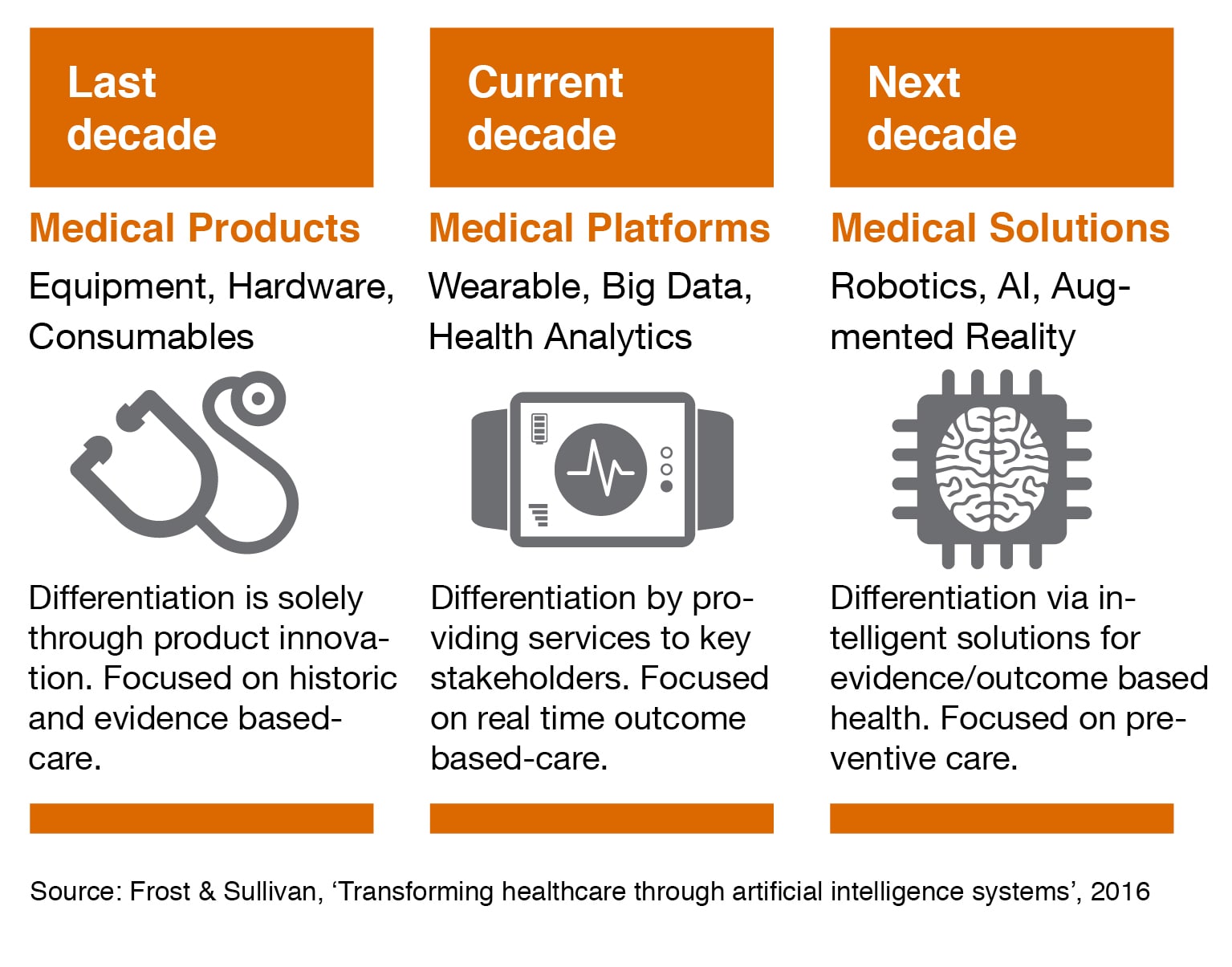
Five distinct trends are converging to determine how artificial intelligence (AI) and robotics will define New Health
AI and robots that support, diagnose and treat people are already in homes, workplaces and clinical environments all over the world. And how we embrace AI and Robotics to complement and enhance current healthcare services over the next 10 years will define our ability to deliver a more responsive health service with improved health outcomes, while at the same time enabling people to take more control over their day-to-day health needs.

Five distinct trends are converging, which mean AI and robotics will come to define New Health:
- First and foremost is the value challenge that all countries across the globe are facing – there is escalating demand from long-term, chronic disease, rising costs, often with an ageing population and limited resources. Yet we are continuing to invest in facilities and equipment that were built to solve a completely different set needs. A hospital-centric system deals well with serious health episodes that require days or weeks of acute care for very ill people. But it was never intended to deal with large numbers of people whose conditions are chronic, complex and require treatment for the longer term.
- The past decade has seen an explosion in the amount of health data that is now available to us. For example, for a skin specialist there are 11,000 new dermatology articles published every year. In 2013, it was estimated that the volume of health-related data had reached over 4 zettabytes – that’s 4 trillion gigabytes (1021) - and there are those who project this exponential growth rate to reach 10 times that by 2020, and, even beyond, to yottabyte (1024) proportions[1]. Furthermore, fully 80% of this extraordinary amount of data is unstructured[2], meaning that it’s not contained in a database or some other type of data structure. Staying current with and being able to access this data is simply beyond the scope of any human individual, no matter how capable or intelligent.
- Information technology development in healthcare has been rapidly moving from products to services to solutions (Frost & Sullivan, 2016). Past decades have focused on the innovation provided by medical products delivering historic and evidence-based care. The present decade is one of medical platforms focused on real-time, outcome-based care. The next decade is moving towards medical solutions – using AI, robotics, and virtual and augmented reality – to deliver intelligent solutions for both evidence and outcome based health, but focusing on collaborative, preventative care. This confluence of technology-based products, platforms and solutions is leading to a previously unimagined precision medicine, down to the familial and individual level, which one day may even be able to predict and thereby prevent disease.
- Technology has, of course, had an impact far beyond the developments in healthcare. The explosion of technology – digitally enabled, wireless connectivity across increasingly mobile devices – has created an increasing democratisation of access for healthcare. Some of the most powerful AI tools are already embedded in Android or iOS. Harnessing this technology is providing consumers with the data and information they need to proactively manage their own health and wellness, and to make better, more informed decisions in partnership with their healthcare providers.
- Finally, the willingness of the general public to be more active participants in their own health and wellness has now reached critical mass. As we reported in our 2016 survey Care Anywhere, the explosion of technology and the increasing ubiquity of the Internet of Things (IoT) is bringing about breakthroughs that are erasing healthcare boundaries and enabling care anywhere and everywhere[3]. And this willingness is extending into the areas of AI and robotics, which we explore in this report.

[1] The Medical Futurist (2016). http://medicalfuturist.com/artificial-intelligence-will-redesign-healthcare/Opens in a new window
[2] Healthcare Data Institute (2015). http://healthcaredatainstitute.com/2015/02/18/big-unstructured-datas-contribution-to-healthcare/Opens in a new window
[3] PwC (2016). Care Anywhere: Moving health and wellness out of the hospital and into the hands of the consumer. https://www.pwc.com/m1/en/publications/documents/care-anywhere.pdfOpens in a new window (file size: 1.0 MB) (pdf, 1.1mb)

















